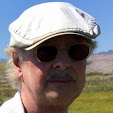 Map photo source: www.usc.edu/libraries/archives/la/historic/redcars/redcar_map.jpeg
Map photo source: www.usc.edu/libraries/archives/la/historic/redcars/redcar_map.jpegChangeling Movie 2008
(Excerpt) "... [This movie] impressively continues Clint Eastwood's great run of ambitious late-career pictures. Emotionally powerful and stylistically sure-handed, this true story-inspired drama begins small ... only to gradually fan out to become a comprehensive critique of the entire power structure of Los Angeles, circa 1928.Read more: www.variety.com
... further period verisimilitude stems from ... the occasional presence of the extinct Red Car trolleys ..."
Red Car Trolleys
(Excerpt) "For sixty years, the Los Angeles area was served by a vast network of electric railway lines operated by Pacific Electric Railway ... the Pacific Electric's trolleys and interurban cars blanketed the Los Angeles area ..."Read more: www.railwaypreservation.com
(Excerpt) "... if you talk to people of a certain age who grew up in Los Angeles, and mention the words 'red cars', you will hear about a time before the freeways, when a network of rail lines and electric streetcars connected L.A., Orange, Ventura, San Bernardino and Riverside counties ..."Read more: www.usc.edu
Pacific Electric Railway
(Excerpt) "Henry Huntington, seeing an opportunity to move in on the still small public transportation market in southern California, began buying land in growing areas not yet reached by existing public transportation. In 1901 he established the Pacific Electric Railway to handle these holdings ... [including] The Mount Lowe trolley, which was a narrow-guage cable car ride to the top of Echo Mountain.By the 1920s, as the popularity of automobiles increased, service to some communities was discontinued as tracks were paved over, and the trains had to yield their high speed right of ways to traffic crossings. Lack of public support defeated plans for a subway or elevated rail system, and bus lines began to replace the red cars in many areas.
World War II brought a brief resurgence in popularity to rail travel, and the refurbishing of some lines, in fact ridership numbers hit an all-time high in 1944. But by the 1950s it was clear that the automobile had become the premier means of travel in L.A. In 1953, Pacific Electric handed over control of the bus lines and the red car lines to Metropolitan Coach Lines, and then in 1958, the newly created Los Angeles Metropolitan Transit Authority took over both bus and rail passenger service in southern California. The explosive growth and sprawl of L.A. in the postwar years, lack of public money to keep up the existing lines, the huge increase in automobiles and the freeways that were built to accommodate them all conspired to kill the red cars. By 1959 only the Los Angeles to Long Beach trolley line remained, and on April 8, 1961 it, too, ceased operation.
At its peak, the Pacific Electric Railway was huge: 1,150 miles of track covering four counties and 900 cars. 1944 marked the highest ridership: over 109 million passengers."
Read more: www.usc.edu
(Excerpt) "... Unfortunately, Huntington’s network of electric railways all ended up on downtown streets where they converged at its hub at 6th and Main streets. The result was a huge trolley traffic jam on Main Street that only got worse with the years ..."Read more: http://www.bibliobuffet.com/content/view/916/195/
Pacific Electric Railway Dismantled
Read more: http://www.uncanny.net/~wetzel/pedemise.htm
Also see the blog: EV Does It, Los Angeles Red Car Trolleys, Another Side. This blog post explores a persistent urban myth about the destruction of electric streetcar lines with some evidence and interpretations from history and brief descriptions of impacts by more current transportation systems. Commenters have contributed to threads in the post's discussion
..
